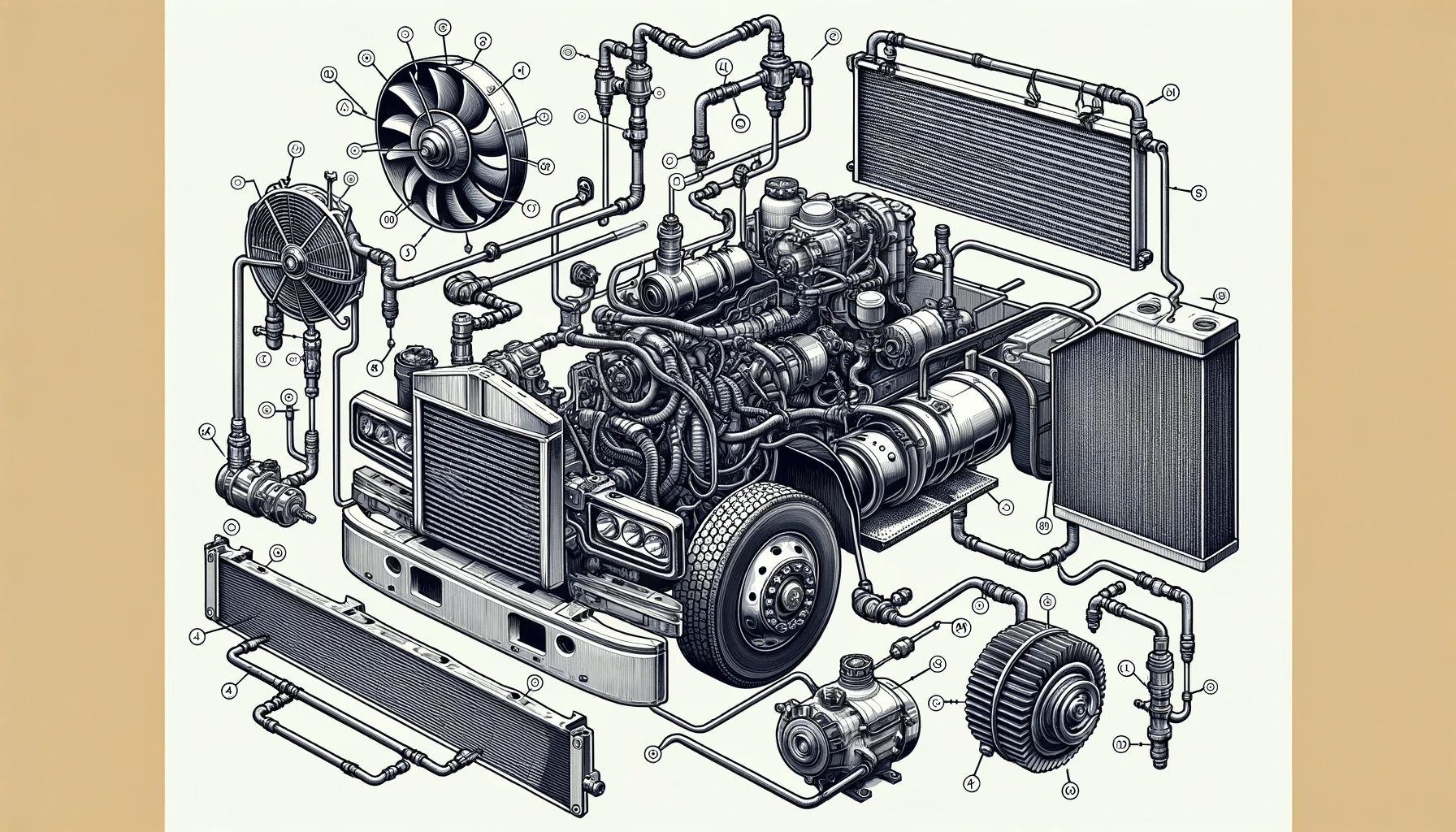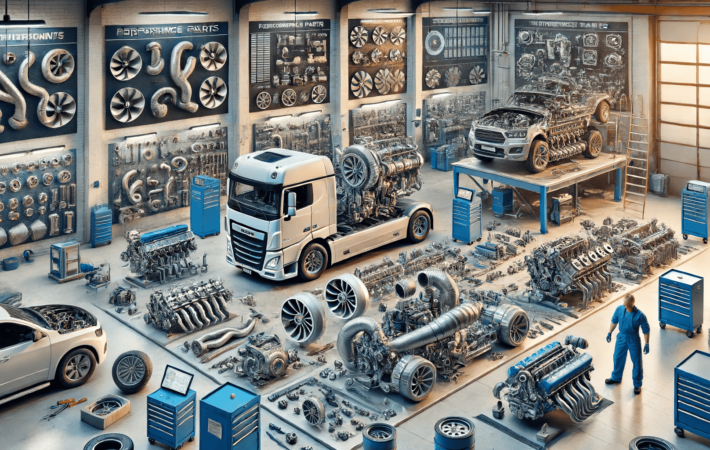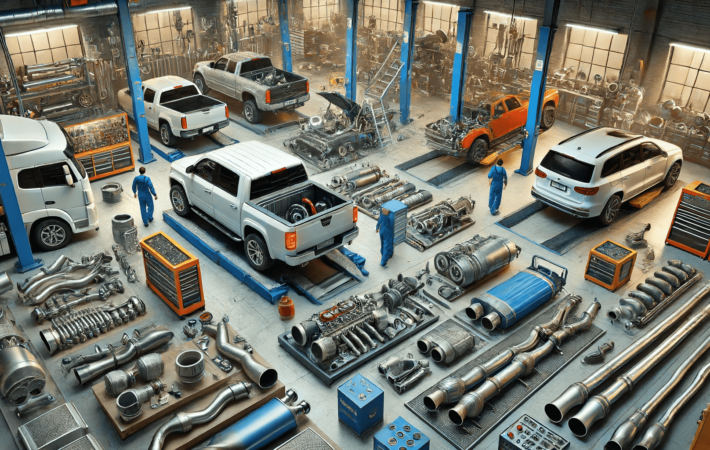Introduction:
Trucks are the workhorses of the road, capable of hauling heavy loads and enduring long journeys. However, prolonged use and demanding conditions can take a toll on your truck’s cooling system, leading to overheating and decreased performance. In this blog, we’ll explore the importance of maintaining a properly functioning cooling system and discuss strategies for upgrading your truck’s cooling system to enhance performance and reliability. Whether you’re hauling cargo cross-country or navigating rugged terrain, investing in aftermarket modifications for your truck’s cooling system can help you stay cool under pressure and maximize your vehicle’s performance.
Understanding Your Truck’s Cooling System:
Before delving into upgrades and modifications, it’s essential to understand how your truck’s cooling system works and why it’s crucial for maintaining optimal performance. The cooling system is responsible for regulating the engine’s temperature by dissipating heat generated during combustion. It consists of several components, including the radiator, water pump, thermostat, cooling fan, and hoses. Coolant circulates through the engine and absorbs heat before returning to the radiator, where it’s cooled and recirculated. A properly functioning cooling system is essential for preventing engine overheating, minimizing wear and tear on vital components, and ensuring smooth operation on the road.
Common Cooling System Issues:
Over time, your truck’s cooling system may experience wear and tear, leading to various issues that can compromise performance and reliability. Some common cooling system problems include:
- Leaks: Leaking hoses, gaskets, or seals can result in coolant loss and decreased cooling efficiency. Inspecting your truck’s cooling system regularly for signs of leaks and addressing any issues promptly can help prevent more extensive damage.
- Clogged Radiator: Accumulation of dirt, debris, or corrosion can restrict airflow through the radiator, reducing its cooling capacity and causing the engine to overheat. Flushing the radiator and removing any buildup can improve cooling system efficiency and prevent overheating.
- Worn Water Pump: The water pump is responsible for circulating coolant through the engine and radiator. Over time, the water pump may wear out or develop leaks, resulting in decreased coolant flow and engine overheating. Replacing the water pump with a high-quality aftermarket component can restore cooling system performance and prevent engine damage.
Upgrading Your Truck’s Cooling System:
Investing in aftermarket modifications for your truck’s cooling system can help enhance performance, reliability, and durability. Whether you’re looking to increase cooling capacity, improve airflow, or upgrade to more durable components, there are several upgrades to consider:
- High-Performance Radiator: Upgrading to a high-performance radiator with larger cooling tubes, increased surface area, and improved heat dissipation can significantly enhance cooling system efficiency and reduce the risk of overheating, especially under heavy load or extreme conditions. When shopping for parts for trucks in Texas, look for reputable suppliers that offer quality radiators designed for your specific make and model.
- Electric Cooling Fans: Replacing the mechanical cooling fan with an electric cooling fan can provide more precise control over cooling system operation and reduce parasitic drag on the engine. Electric fans are available in various sizes and configurations to suit different cooling requirements, and they can be easily integrated into your truck’s existing cooling system. Consider purchasing aftermarket electric fans from trusted suppliers specializing in aftermarket modifications in Texas to ensure compatibility and reliability.
- High-Flow Thermostat: Installing a high-flow thermostat can help optimize coolant flow through the engine and radiator, improving cooling system efficiency and reducing the risk of overheating. High-flow thermostats are designed to open at lower temperatures than stock thermostats, allowing coolant to circulate more quickly and effectively. Look for aftermarket thermostats specifically engineered for performance applications to ensure reliable operation and consistent temperature control.
- Coolant Additives: Adding aftermarket coolant additives can help enhance the performance and longevity of your truck’s cooling system. These additives are designed to improve coolant flow, lubricate moving parts, and protect against corrosion and rust formation. When selecting coolant additives, choose products that are compatible with your truck’s cooling system and meet the manufacturer’s specifications.
- Upgraded Hoses and Clamps: Upgrading to high-quality silicone hoses and stainless steel clamps can improve durability and reliability in your truck’s cooling system. Silicone hoses offer superior resistance to heat, pressure, and chemical exposure compared to traditional rubber hoses, while stainless steel clamps provide secure and leak-proof connections. Upgrading these components can help prevent coolant leaks and ensure long-term performance under demanding conditions.
Conclusion:
In conclusion, upgrading your truck’s cooling system is essential for maximizing performance, reliability, and durability on the road. By investing in aftermarket modifications tailored to your specific needs and driving conditions, you can enhance cooling system efficiency, reduce the risk of overheating, and prolong the life of your truck’s engine. When shopping for parts for trucks in Texas or seeking aftermarket modifications in Texas, trust Black Diamond Unlimited for quality products and expert advice. With a wide selection of aftermarket components and accessories designed to meet the needs of truck owners, Black Diamond Unlimited is your one-stop shop for all your truck cooling system upgrade needs.






Leave a comment
Your email address will not be published. Required fields are marked *